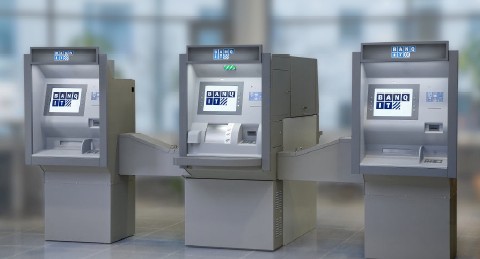“Router” Cash Recycling – Case Study
Banqit’s Q-Cash Router Cash Recycling System Proves the Concept
Cash circulation volumes continue to grow across the globe. According to various studies conducted by some of the world’s leading central banks and payments councils, around 90% of all payment transactions worldwide are made in cash.
But the cost of handling cash is high, especially where long-established conventional methods involving manual work and transportation between cash centres, retailers, banks and consumers have not been brought up to date with state-of- the-art systems.
A new concept has now been introduced by the Swedish-based ATM designer and manufacturer BANQIT. The Q-Cash Router is a novel cash recycling system that will handle deposits, withdrawals and exchange simultaneously from multiple access points. Notes are effectively recirculated in one system – as retailers deposit their daily takings, bank customers can make withdrawals in parallel.
The Q-Cash Router can be equipped with four ATM fascias. The central access point is a cash recycling fascia that enables retailers to deposit bundles of up to 400 notes of mixed denominations, as well as to withdraw cash exactly like an ATM. Two side access points serve as conventional ATMs providing withdrawal functions. But instead of withdrawing cash from ATM cassettes, these fascias use cash which is drawn from the central recycling module. The fourth fascia is located to the rear of the main unit and provides an option for a duplicate ‘utility’, typically used by bank or retail staff to process cash deposits or till surpluses and to obtain cash.
Any cash recycled and reissued through the Q-Cash Router is authenticated and tested for fitness according to local regulations. The system, for example, fully complies with Article 6 of the Council of the European Union Regulation No. 1338/2001 for recirculation of euro banknotes, and the ECB decision on the authenticity and fitness checking and recirculation of the euro banknotes.
The Q-Cash Router retains suspect notes in clear plastic SealPacks™ which link the notes back to the depositor. The same type of plastic pack is also used to package notes which are unfit or surplus to requirements. The number of unfit or surplus notes placed into each SealPack is user-defined to enable efficient back office or central banknote processing and reconciliation.
The Q-Cash Router is particularly suited for installation in environments where large volumes of cash are processed and circulated every day, such as supermarkets, shopping malls and large bank branch offices, and where the amounts being deposited and withdrawn are roughly in balance. In all cases, deposits can be made daily and credited to customers accounts (and, in the case of ‘private’ systems in supermarkets, reconciled to POS terminals), the deposits then being used not only for cash withdrawals but also to replenish tills or even sold to CIT companies for replenishment of other ATMs.
The system has been successfully running at one of Swedbank’s branches in Stockholm since 2009. Together with Swedbank, BANQIT has conducted research involving 41 business customers that have deposited their daily cash takings in the system while consumers have used it for withdrawals. On average, around 360 deposits and 8,000 withdrawals have been processed each month. Deposits amounted to nearly €250,000 per week while withdrawals equalled around €220,000, with the remaining amount removed from recycling (excess and poor quality notes).
As a result, in a year just one Q-Cash Router was able to recirculate €24.4m, reducing Swedbank’s costs for cash transportation and processing by 50%. Between 80-90% of cash deposited was recycled without need for transportation. The evaluation has shown that local recycling works well with highly positive feedback received from customers, retailers and the bank.










